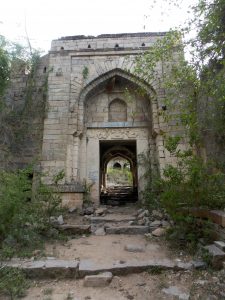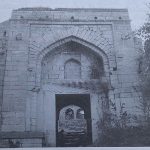Location
The Kowlas Fort is located near the village of Kowlas, the fort is 3km from the village.People need to trek 250mts to reach the fort. The fort is 91km from Kamareddy and 169km from Hyderabad.


Description
The village of Kowlas, nestled in Jukkal Mandal within the Kamareddy District, holds a rich historical legacy. Initially known as ‘Kailas,’ local lore speaks of the Kakatiya rulers erecting five Sivalingas in five distinct corners of the region. In ancient times, Kowlas, Bodhan, and Nizamabad collectively formed what was referred to as Indur. The Kowlas Fort, originating in the 9th century CE under the Rashtrakutas, has seen a succession of rulers and regimes.
Initially built by the Rashtrakutas and later taken over by the Chalukyas of the Kalyani dynasty in the 10th century, the fort subsequently fell under the control of the Kakatiyas of Warangal until 1323 CE. With the arrival of Muslim rule, it changed hands among the Bahamanis, Qutb Shahis, Naikwaries, Mughals, Marathas, and eventually the Asaf Jahis.
Raja Gopal Singh Gour and his descendants maintained control over the fort until 1947 CE. The grand structure spans approximately one kilometer in length and seven hundred meters in width, boasting 52 bastions, three temples (Venkateswara, Ramalayam, and Mahadev), two mosques, multiple wells, granaries, and structures like Rani Mahal and Elephant Well (Enugula Bavi).
The Jagdamba Bhawani cannon, also known as Navgarji tope, forged by Raja Gopal Singh in 1728 CE, is counted among the largest cannons of its era. Additionally, there are five other cannons within the fort. Originally built by the Kakatiya rulers, the fort dates back to the 14th century and was later seized by Muslim rulers.
Constructed in a semi-Dravidian style at an altitude of approximately 1100 ft, the fort is encircled by a natural moat created by a stream. Enclosed by a formidable fortification wall, the area contains gateways, temples, mosques, and other structures. With 52 bastions, numerous water tanks, and around 20 large cannons, the fort has been designated a protected area for its temple and dargah by the Archaeology Department.
Several temples, including the Kasikund temple designed after the Kasi temple, along with shrines dedicated to Rama, Hanuman, and Balaji, adorn the landscape.
Existing Condition
The fort is in ruins without proper path and the access to the fort will be difficult during monsoon.
Archive
References
Kamareddy District Website, URL- https://kamareddy.telangana.gov.in/tourist-place/koulas-fort/
Contributors
NIUM

